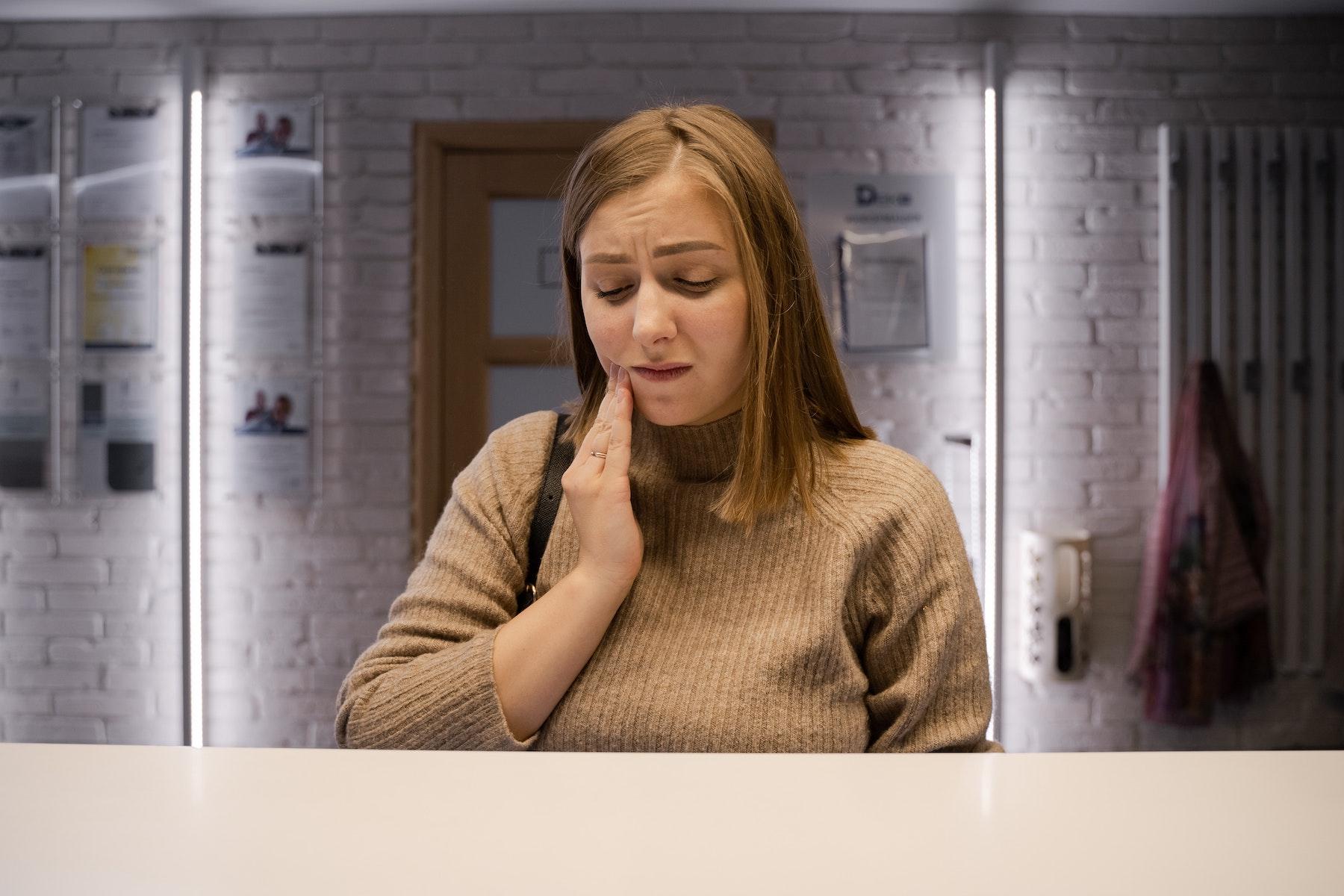How To Help Patients Decrease Hypersensitivity
By Dr. Anand, DDS
ultralightblogs@gmail.com
How To Help Patients Decrease Hypersensitivity
By Dr. Anand, DDS | ultralightblogs@gmail.com
Your patients are doing all the right things - attending routine dental visits and brushing and flossing regularly, but they still report dental sensitivity. They want answers which is understandable. What can you do to make them feel comfortable and avoid that sensitive feeling to temperature changes? There are several ways to treat hypersensitivity, but first you need to identify the cause of it.
Your patients are doing all the right things - attending routine dental visits and brushing and flossing regularly, but they still report dental sensitivity. They want answers which is understandable. What can you do to make them feel comfortable and avoid that sensitive feeling to temperature changes? There are several ways to treat hypersensitivity, but first you need to identify the cause of it.
Tooth sensitivity can arise for many reasons and sometimes it is out of our control. Sensitivity typically arises when the outermost layer of our teeth, the tooth enamel, gets worn away and exposes the inner dentin layer. Sensitivity can develop because of:
- Tooth decay: If your patient has a cavity or a broken filling, it can cause hypersensitivity to thermal stimulation from hot or cold substances.
- Chips and fractures: Chipping a tooth from trauma or tooth decay can leave the tooth dentin or pulp exposed where there are sensitive nerves.
- Gum problems: Gum recession and advanced periodontal disease can leave your patients with sensitivity at the gum line because there is damage to the gums, surrounding tissue, and bone.
- Pregnancy: Hormones can temporarily cause our gums to be sensitive.
- Excessive teeth whitening: Many patients enjoy whitening, but doing it frequently can make your teeth more sensitive to temperature changes
- Erosion of teeth: If your patient has any gastrointestinal issues like acid reflux or suffer from a medical condition like bulimia, it can result in the loss of tooth enamel. Often patients will experience extreme sensitivity to hot or cold substances.
- Chronic grinding: Patients with clenching or grinding can cause damage by wearing away tooth structure, fillings, and crowns. It can leave a person with sensitivity and jaw pain.
Tooth sensitivity can arise for many reasons and sometimes it is out of our control. Sensitivity typically arises when the outermost layer of our teeth, the tooth enamel, gets worn away and exposes the inner dentin layer. Sensitivity can develop because of:
- Tooth decay: If your patient has a cavity or a broken filling, it can cause hypersensitivity to thermal stimulation from hot or cold substances.
- Chips and fractures: Chipping a tooth from trauma or tooth decay can leave the tooth dentin or pulp exposed where there are sensitive nerves.
- Gum problems: Gum recession and advanced periodontal disease can leave your patients with sensitivity at the gum line because there is damage to the gums, surrounding tissue, and bone.
- Pregnancy: Hormones can temporarily cause our gums to be sensitive.
- Excessive teeth whitening: Many patients enjoy whitening, but doing it frequently can make your teeth more sensitive to temperature changes
- Erosion of teeth: If your patient has any gastrointestinal issues like acid reflux or suffer from a medical condition like bulimia, it can result in the loss of tooth enamel. Often patients will experience extreme sensitivity to hot or cold substances.
- Chronic grinding: Patients with clenching or grinding can cause damage by wearing away tooth structure, fillings, and crowns. It can leave a person with sensitivity and jaw pain.
Treatment options for hypersensitivity will depend on the cause, but the best ways to help your patients include:
- Sensitivity toothpaste: Oral care products can help protect and strengthen enamel with special ingredients like potassium nitrate. Potassium Nitrate helps seal the teeth and protect the nerves from sensitivity.
- Antiseptic mouthwash: Recommend a mouth rinse that is alcohol free and contains fluoride to help reduce pain and inflammation.
- Reduce frequency of teeth whitening: While your patients may love bleaching, recommend that they take a break since it can cause extreme discomfort. Usually sensitivity is temporary, but you can also recommend a calmer whitening product.
- Use a toothbrush with soft bristles: Tell your patients to gently brush around the gumline so they don’t wear away tissue and expose the root surface.
- Avoid highly acidic foods: Foods and beverages that are highly acidic can cause damage like tooth decay which gives your patients an increased risk for hypersensitivity. Recommend foods that are more alkaline and that are less processed. Encourage them to drink lots of water instead of sugary beverages.
- Visit the dentist regularly: You can treat your patients with hypersensitivity in-office with a professional fluoride treatment to help strengthen the teeth and protect them from tooth decay. Silver diamine fluoride (SDF) is also recommended for difficult areas of tooth sensitivity and active root cavities.
- Get a night guard: If your patient clenches, he/she may benefit from a custom night guard to avoid enamel attrition and sensitivity at the gum line.
Treatment options for hypersensitivity will depend on the cause, but the best ways to help your patients include:
- Sensitivity toothpaste: Oral care products can help protect and strengthen enamel with special ingredients like potassium nitrate. Potassium Nitrate helps seal the teeth and protect the nerves from sensitivity.
- Antiseptic mouthwash: Recommend a mouth rinse that is alcohol free and contains fluoride to help reduce pain and inflammation.
- Reduce frequency of teeth whitening: While your patients may love bleaching, recommend that they take a break since it can cause extreme discomfort. Usually sensitivity is temporary, but you can also recommend a calmer whitening product.
- Use a toothbrush with soft bristles: Tell your patients to gently brush around the gumline so they don’t wear away tissue and expose the root surface.
- Avoid highly acidic foods: Foods and beverages that are highly acidic can cause damage like tooth decay which gives your patients an increased risk for hypersensitivity. Recommend foods that are more alkaline and that are less processed. Encourage them to drink lots of water instead of sugary beverages.
- Visit the dentist regularly: You can treat your patients with hypersensitivity in-office with a professional fluoride treatment to help strengthen the teeth and protect them from tooth decay. Silver diamine fluoride (SDF) is also recommended for difficult areas of tooth sensitivity and active root cavities.
- Get a night guard: If your patient clenches, he/she may benefit from a custom night guard to avoid enamel attrition and sensitivity at the gum line.
CHECK OUT OUR MOST POPULAR CONTENT
Join the Ultralight Community to get early access to discount codes, products, blogs and more!








